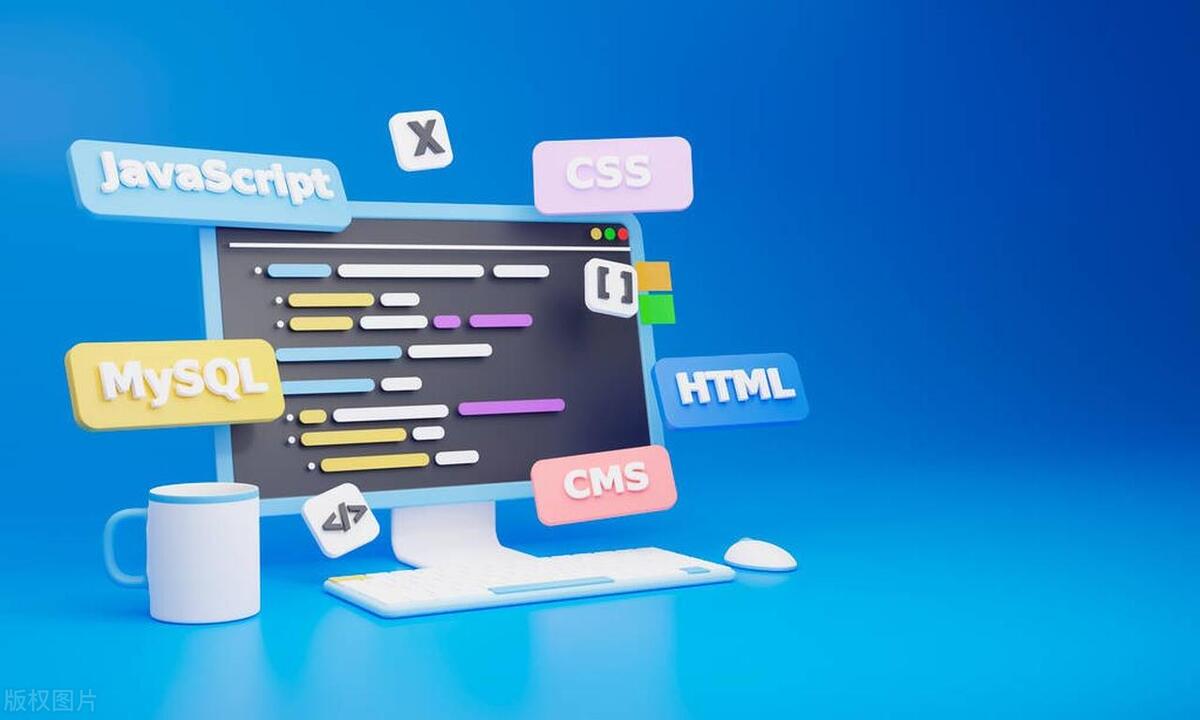Whether to choose Vite or Vue CLI depends on project requirements and development priorities. 1. Startup speed: Vite uses the browser's native ES module loading mechanism, which is extremely fast and cold-start, usually completed within 300ms, while Vue CLI uses Webpack to rely on packages and is slow to start; 2. Configuration complexity: Vite starts with zero configuration, has a rich plug-in ecosystem, which is suitable for modern front-end technology stacks, Vue CLI provides comprehensive configuration options, suitable for enterprise-level customization but has high learning costs; 3. Applicable project types: Vite is suitable for small projects, rapid prototype development, and projects using Vue 3. Vue CLI is more suitable for medium and large enterprise projects or projects that need to be compatible with Vue 2; 4. Plug-in ecosystem: Vue CLI has a complete ecosystem but is slow to update, Vite develops rapidly, and integrates new technologies actively.

Choose Vue CLI or Vite? It depends on the actual needs of your project and the priority of your development experience. If you are pursuing fast start, modern module support and lightweight configuration, Vite is a better choice; and if you need a mature, highly integrated scaffolding tool for mid-to-large projects, Vue CLI is still worth considering.

1. Startup speed comparison: Vite is obviously faster
The biggest advantage of Vite is its "extremely fast cold start". It utilizes the browser's native ES module loading mechanism. It does not require packaging in development mode, and directly loads modules on demand, so the project is started almost instantly.

- Vue CLI uses Webpack, and you must first package all dependencies when starting, and the larger the project, the slower it will be.
- Vite is hardly built during the development stage and is only packaged with Rollup in production environments.
For example: A Vue project that has just been initialized, the Vite startup time is usually within 300ms, while the Vue CLI may take 2~5 seconds or even longer.
2. Configuration complexity: Vite is simpler, Vue CLI is more comprehensive
The concept of Vite is to start with "zero configuration" and is suitable for modern front-end projects, especially projects that use technology stacks such as TypeScript, JSX, CSS preprocessors. Its configuration files are very simple and the plug-in ecosystem is becoming more and more abundant.

Vue CLI provides a complete set of configurable UI and plug-in systems suitable for enterprise-level projects or scenarios where a large number of customized build processes are required. But it also brings higher learning costs and maintenance burdens.
Common configuration differences include:
- Babel and TypeScript support: Vite basically supports by default, just install plug-ins
- CSS preprocessing: Both support it, but the Vite approach is closer to the native import approach
- Environment variable management: Vite is more flexible and Vue CLI is more structured
3. Applicable project types: Depend on scale and target environment
If you are working on the following types of projects, Vite is the first choice:
- Rapid prototyping
- Small component library, demo page
- Projects using Vue 3 Composition API
- New projects that require SSR or server rendering (Vite supports SSR better and better)
And Vue CLI is more suitable for these situations:
- Medium- and large enterprise-level projects
- Need to be a Vue 2-compatible old project migration
- The team is already familiar with the Webpack construction system
- Deep optimization of packaging volume and loading performance is required
4. Plugin Ecology and Community Support
As an old tool, Vue CLI has a very complete plug-in ecosystem, rich community documents, and it is easy to find solutions when encountering problems. But it is updated less frequently, and some plugins may not keep up with the latest technology trends.
Although Vite is young, it is developing rapidly, and the official support for mainstream frameworks (React/Vue/Svelte), and the number of plug-ins is also growing rapidly. The integration of new technologies such as SWC and ESBuild is more active.
Basically these differences. You can decide based on your project type and team habits. If you start a new project from scratch, it is recommended to give priority to Vite, which is really much faster.
The above is the detailed content of Vue CLI vs Vite: Choosing Your Build Tool. For more information, please follow other related articles on the PHP Chinese website!

Hot AI Tools

Undress AI Tool
Undress images for free

Undresser.AI Undress
AI-powered app for creating realistic nude photos

AI Clothes Remover
Online AI tool for removing clothes from photos.

Clothoff.io
AI clothes remover

Video Face Swap
Swap faces in any video effortlessly with our completely free AI face swap tool!

Hot Article

Hot Tools

Notepad++7.3.1
Easy-to-use and free code editor

SublimeText3 Chinese version
Chinese version, very easy to use

Zend Studio 13.0.1
Powerful PHP integrated development environment

Dreamweaver CS6
Visual web development tools

SublimeText3 Mac version
God-level code editing software (SublimeText3)

Hot Topics
 What is the role of (formerly PortalVue) in Vue 3 for rendering content outside the current component's DOM hierarchy?
Jun 11, 2025 am 12:09 AM
What is the role of (formerly PortalVue) in Vue 3 for rendering content outside the current component's DOM hierarchy?
Jun 11, 2025 am 12:09 AM
Vue3 is used to render content outside the current component DOM structure. 1. It allows you to move elements such as modal boxes, prompt tools to other locations on the page to solve layout problems, z-index hierarchy and accessibility problems; 2. When using it, you need to wrap the target content and specify the target selector, such as; 3. Vue will physically move the corresponding DOM node to the specified position while maintaining responsiveness and event logic; 4. Common application scenarios include modal boxes, notification messages, tooltips and barrier-free content; 5. When using it, you need to ensure that the target element already exists, and pay attention to the style scope and dynamic logic processing. In short, maintaining the logical relationship of component tree through virtual references provides a concise solution for complex UIs.
 What are some strategies for managing CSS and styling at scale in a large Vue project?
Jun 10, 2025 am 12:10 AM
What are some strategies for managing CSS and styling at scale in a large Vue project?
Jun 10, 2025 am 12:10 AM
TomanageCSSandstylinginlargeVueprojectseffectively,adoptscopedstylesbydefault,establishaglobalCSSarchitecture,useconsistentnamingconventions,selectivelyleverageCSS-in-JSorutilitylibraries,enforceconsistencywithlinters,anddocumentdesigntokens.Beginwit
 How can CSS be used to implement dark mode theming on a website?
Jun 19, 2025 am 12:51 AM
How can CSS be used to implement dark mode theming on a website?
Jun 19, 2025 am 12:51 AM
ToimplementdarkmodeinCSSeffectively,useCSSvariablesforthemecolors,detectsystempreferenceswithprefers-color-scheme,addamanualtogglebutton,andhandleimagesandbackgroundsthoughtfully.1.DefineCSSvariablesforlightanddarkthemestomanagecolorsefficiently.2.Us
 What are some common techniques for vertically centering content using CSS?
Jun 12, 2025 am 10:27 AM
What are some common techniques for vertically centering content using CSS?
Jun 12, 2025 am 10:27 AM
Vertical centering content can be implemented in CSS in a variety of ways, the most direct way is to use Flexbox. 1. Use Flexbox: By setting the container to display:flex and in conjunction with align-items:center, vertical centering of child elements can be easily achieved; 2. Combination of absolute positioning and transform: suitable for absolute positioning elements, by setting top and left to 50% and then using translate (-50%,-50%) to achieve centering; 3. CSSGrid: Through display:grid and place-items:center, horizontal and vertical centering can be achieved at the same time. If only vertical centering is required, use align
 Can you explain the difference between em, rem, px, and viewport units (vh, vw)?
Jun 19, 2025 am 12:51 AM
Can you explain the difference between em, rem, px, and viewport units (vh, vw)?
Jun 19, 2025 am 12:51 AM
The topic differencebetweenem, Rem, PX, andViewportunits (VH, VW) LiesintheirreFerencepoint: PXISFixedandbasedonpixelvalues, emissrelative EtothefontsizeFheelementoritsparent, Remisrelelatotherootfontsize, AndVH/VwarebaseDontheviewporttimensions.1.PXoffersprecis
 How does in Vue 3 help manage asynchronous components and their loading states?
Jun 10, 2025 am 12:07 AM
How does in Vue 3 help manage asynchronous components and their loading states?
Jun 10, 2025 am 12:07 AM
SuspenseinVue3simplifieshandlingasynccomponentsbymanagingloadingstatesandintegratingerrorhandling.1.Itwrapsasynccontentanddisplaysfallbackcontentlikespinnersuntilthecomponentloads.2.YoudefineasynccomponentsusingdefineAsyncComponentandwraptheminaSuspe
 What are slots (default, named, scoped) in Vue, and how do they enable flexible component composition?
Jun 10, 2025 am 12:08 AM
What are slots (default, named, scoped) in Vue, and how do they enable flexible component composition?
Jun 10, 2025 am 12:08 AM
InVue,slotsareessentialforbuildingreusableandflexiblecomponents,andtherearethreemaintypes:default,named,andscoped.Defaultslotsallowaparenttopasscontentintoachildcomponentwithnospecificplacement,idealforsingle-sectioncomponentslikecards.Namedslotsenab
 How does Vue's error handling mechanism (e.g., errorCaptured hook, app.config.errorHandler) work?
Jun 10, 2025 am 12:12 AM
How does Vue's error handling mechanism (e.g., errorCaptured hook, app.config.errorHandler) work?
Jun 10, 2025 am 12:12 AM
Vue provides errorCaptured hooks and global error handlers to deal with application errors. 1. The errorCaptured hook can capture JavaScript errors in the child component tree, including errors in the life cycle hook and rendering function, receive error objects, error components and error location information, and can prevent errors from bubble upward by returning false. 2. Global error handling is configured through app.config.errorHandler, which is used to capture unexpected errors in the entire application, receive error objects, component instances and error type information. It is suitable for rendering functions, life cycle hooks, watcher callbacks and other scenarios, but does not automatically capture errors in event processing or asynchronous operations. 3.






